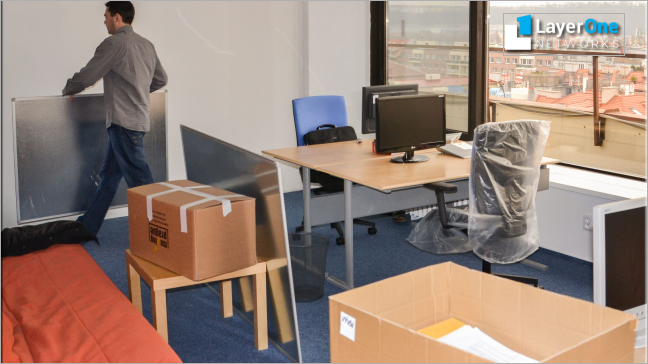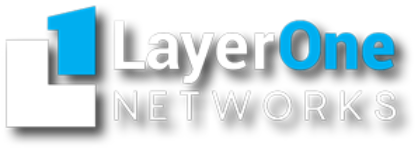Introduction:
Moving to a new office is a big step for any business, whether expanding to a larger space or streamlining into a smaller one. But it’s not just about moving furniture; ensuring your IT setup is ready to support your team and keep your services running smoothly after you’ve settled in is crucial.
This blog post provides a practical IT checklist for small businesses planning an office relocation. We’ll discuss key aspects of network security and necessary IT infrastructure adjustments to ensure a smooth transition. By following the IT consulting services checklist, you can manage your office move securely and efficiently, minimizing downtime and ensuring your team and clients face no disruptions.
An 8-step IT Checklist for Your Business
Take inventory
Before anything else, it’s vital to conduct a thorough inventory of your business’s hardware, software, and other essential network components.
- Assess the condition of each item to ensure they still meet your operational needs and will function optimally in the new office setting.
- Make a detailed list of any equipment that requires upgrades or replacements and proceed to order the necessary items.
- Responsibly dispose of any outdated or malfunctioning equipment.
Having all network diagrams and user guides on hand is also helpful to facilitate a smooth transition. While this task may seem daunting, consider hiring a Managed IT services provider. They can efficiently handle this process, saving you time and reducing the stress of such a detailed task.
Back-Up Before You Move Out
As you prepare to move, one critical question is: Have we backed up all our data? Employing reliable backup and disaster recovery services is essential to protect your business from data loss. This step secures your critical information and minimizes potential downtime and financial losses in case of data-related incidents. Setting up these services before the move will safeguard your data integrity and facilitate a seamless transition to your new location.
Transitioning On-Premise Servers to the Cloud
Evaluate your current on-premise resources, particularly your servers. These servers often function as centralized hubs for file sharing among employees and store vital business documents like spreadsheets, presentations, and reports. While maintaining these on-premises can seem necessary, extensive measures are often required to secure access.
Shifting these resources to the cloud can be a more efficient solution. Cloud platforms provide robust security features, including advanced authentication and encryption options that often surpass those available with on-premise setups. If establishing or updating a business network, consider this the ideal time to migrate your traditional file-sharing servers to a cloud environment. This move not only enhances security but also improves accessibility and scalability.
Implementing VoIP Systems
If your business still uses traditional phone systems, relocating your office could be the perfect opportunity to switch to Voice over Internet Protocol (VoIP). VoIP offers several advantages over conventional phone lines, including enhanced portability, improved voice quality, and cost-efficiency.
With VoIP, you can easily move your phone numbers to any location without service interruptions, making it an ideal solution for businesses in transition.
Reviewing Wi-Fi Router Patching Settings
As you gear up for your office move, take a moment to check if your Wi-Fi router automatically downloads and installs software patches. This is a critical security feature that’s frequently missing from many small business network setup guidelines. Ensuring your router’s software is up-to-date is pivotal, as vulnerabilities in router settings and software can be exploited by attackers from outside your physical office space.
If your router lacks the capability to auto-update, now is the perfect time to address this gap, either by modifying its settings or by upgrading to a new model that supports automatic patching. Taking this step helps protect your network from potential security breaches and keeps your business operations safe and secure, especially during the relocation process.
Rotate Infrastructure Configuration Passwords
Regularly changing administrative passwords for critical infrastructure like firewalls and routers is essential for maintaining network security, especially for small businesses. With an office move in progress, now is the right time to update these passwords as part of your IT checklist.
To streamline this process and ensure it doesn’t get overlooked in the future, consider setting up a recurring calendar event to rotate these passwords every quarter. Regularly updating passwords is a straightforward yet effective measure that significantly enhances the security of your network, keeping your business safe from unauthorized access.
Conduct an Internal Network Vulnerability Scan
While many small businesses rightly focus their network security efforts on workstations, it’s crucial not to overlook other devices. Printers, conference room phones, smart displays, and videoconferencing equipment are also connected to the network and can be vulnerable entry points for security threats.
One common mistake in the small business IT checklist is neglecting to change default administrative usernames and passwords on these non-workstation devices and failing to establish a regular patching schedule for them.
Running a business-grade internal network vulnerability scan effectively identifies and addresses vulnerabilities in these often-overlooked devices. This proactive step ensures that all network parts are secure and helps prevent potential security breaches.
Post-relocation review
Even the best-organized office moves can face unforeseen challenges. After relocating, business owners and their teams must take time to familiarize themselves with the new environment. This includes getting to know any new equipment or system upgrades implemented during the move.
Utilizing the expertise of a professional IT consulting firm can be particularly beneficial during this period. They can provide tailored training sessions that help everyone quickly adapt to the new setup, ensuring a smooth transition back to full productivity.
Secure Your IT Setup During Transition
Let LayerOne Networks Ensure a Seamless Move.
Managed IT Services for a Smooth Office Relocation

When setting up a new network, having the right IT solutions partner is crucial for a seamless transition. Here’s how managed IT services benefit your office relocation:
Strategic IT Consultation
Planning ahead with your IT consultant service provider ensures that all future technology needs are addressed. This early collaboration helps you understand the requirements for your new technology setup and prepare for upcoming changes and challenges.
Hardware and Software Procurement
Your IT service provider offers more than technical support—they can also assist your business in acquiring reasonably priced, necessary hardware and software for your new office.
Network Design and Implementation
A reliable IT services provider offers network design services to help design and establish your new location’s network infrastructure. This includes installing routers, switches, and VoIP systems, ensuring your network is secure, dependable, and scalable for future expansion.
Data Migration and Backup
They provide crucial support in migrating your data from the old office to the new one, ensuring that all critical data is transferred securely and without any data loss.
Cloud Computing Services
Migrating to cloud services can significantly enhance the flexibility and scalability of your IT infrastructure. Managed Services can guide the transition of your servers, data storage, and applications to the cloud, optimizing access and security while reducing the physical hardware burden at your new location.
Security and Compliance
IT security services offer comprehensive backup and disaster recovery solutions to protect your business data. They also manage the implementation of firewalls, antivirus software, and encryption technologies to meet compliance requirements.
System Integration and Support
Managed IT services extend to integrating all of your business systems—including servers, workstations, and peripherals—ensuring they operate smoothly. They also offer training for your staff on the new systems and provide ongoing support to address future issues.
Experience the Advantages of Professional Managed IT Services with Layer One Networks
Relocating your office is no small feat. To ensure a smooth transition, it’s crucial to pick a time that minimizes the impact on your employees, operations, and customers. To keep everything on track, organize the move in clear phases: packing, assembly, and testing.
Layer One Networks, your expert IT solutions provider, transforms the complex challenge of moving your business network into a seamless and efficient process. By partnering with us from the start, we minimize downtime and use this transition to enhance your security, migrate services to the cloud, and upgrade your network infrastructure.
As your business continues to grow and its technology requirements evolve, trust Layer One Networks to help scale your IT infrastructure effectively, ensuring your business is set up for future success.

